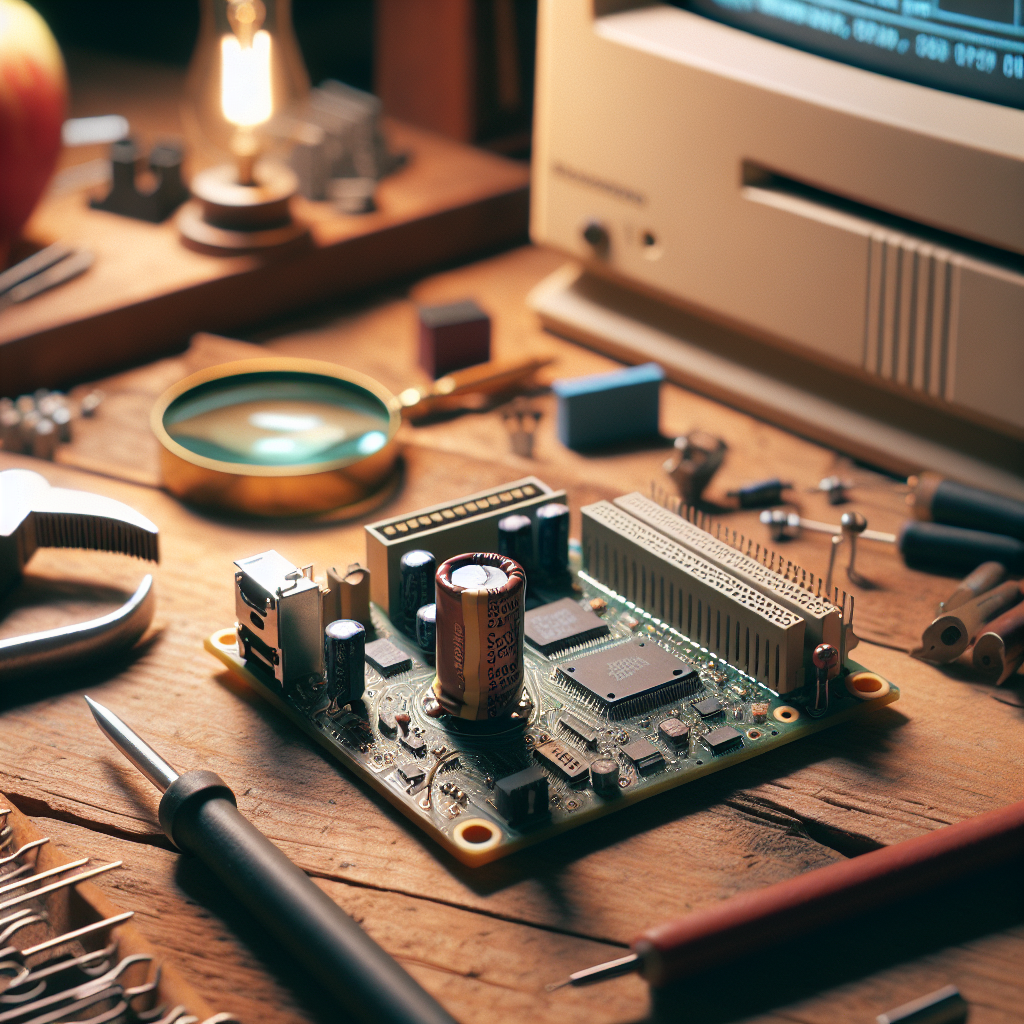
“`html
The Curious Case of the Upside-Down Capacitor in Mid-‘90s Macs
The world of vintage Apple computers is replete with mysteries and surprises, and the mid-’90s Mac LC III is no exception. A peculiar assembly error involving an upside-down capacitor has caught the attention of hobbyists and enthusiasts who delve into classic Macintosh repairs. Let’s explore this intriguing anomaly, and why it’s significant for tech restorers.
The Anatomy of the Error
In the bustling world of tech restoration, few things generate as much excitement as discovering the hidden quirks of legacy devices. According to forum user paul.gaastra on the 68kMLA vintage Mac forum, a capacitor on the Apple mid-’90s Mac LC III was installed the wrong way due to misprinted silkscreen instructions. This “pizza box” series, widely sold between 1993 and 1996, inadvertently featured a design hiccup that has stood the test of time.
Factory Assembly Missteps
- Three capacitors, labeled C19, C21, and C22, located near the power supply connector on the board.
- C19 and C21 were correctly positioned to take on +5V and +12V, respectively.
- The C22 capacitor was mistakenly connecting a -5V rail into its positive terminal—contrary to its design specifications.
This capacitor, an SMD electrolytic, is not designed to handle negative voltage, a discovery confirmed by the keen observations of Doug Brown and other tech enthusiasts.
Implications and the Road to Discovery
Kevin Purdy’s detailed article reveals that Apple’s oversight left many rehabilitation projects in potential jeopardy. The fault wasn’t immediately evident because:
- The affected rail was specifically for serial port or expansion card needs, keeping many users oblivious to its error-prone setup.
- Initial capacitor ratings were designed to withstand up to 16V. This meant that issues with the -5V were not immediately apparent or detrimental while the capacitors were still new.
Intriguingly, previous models like Mac LC and LC II were not affected by this glitch, pointing to a one-off assembly misstep akin to a copy/paste error in software coding.
A Warning to Rehabbers
Hobbyists like Doug Brown have taken to blogs and forums to ensure that other tech restorers don’t repeat Apple’s assembly miscalculation. Brown notes instances of replacement capacitors malfunctioning sharply, leading to robust discussions within the tech-rehab community.
Modern Fixes and Preventing Future Errors
Today’s tech rehabbers lean towards using tantalum capacitors as replacements, especially when dealing with Mac LC III boards. Despite their heightened sensitivity to reverse voltage, these components tend to provide a more stable and reliable solution for modern fixes.
Should Catastrophe Strike
Despite best efforts, should the replacement or repair of capacitors result in catastrophic damage to your LC III board, fear not. Thanks to community-driven efforts, notably by 68kMLA member max1zzz, a reverse-engineered full logic board schematic has been made available to support affected hobbyists.
As a parting note, while the odds of encountering this specific error might be rare, the story emphasizes the importance of diligence, skill, and community support in the art of tech restoration. When embarking on retrieving vintage tech from oblivion, always double-check your components, seek advice, and never hesitate to tread where tech giants once did, albeit with a minor tactile error.
In Conclusion
Kevin Purdy, who brings a wealth of expertise from his time at Ars Technica, Lifehacker, and Wirecutter, offers this fascinating glimpse into an overlooked piece of tech history. His documentation serves as a vital reminder of the complexity within computer assembly and the crucial role of community-led insights in preserving tech heritage.
If you have anecdotes or insights from your experience with vintage Macs, or if you suspect an assembly error in your collections, share with the community. As we learn from past engineering blips, together we maintain the legacy of the tech that shaped our digital landscapes.

